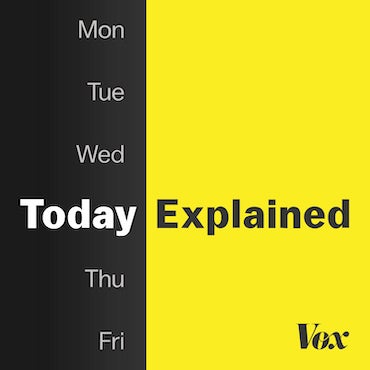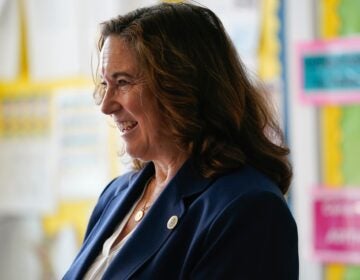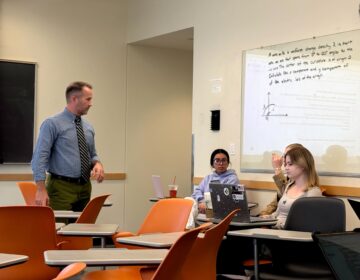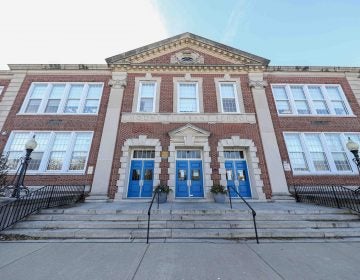‘Students are waiting’: Delaware Gov. Matt Meyer demands quick implementation of new education funding formula
Gov. Matt Meyer wants a solution to school funding inequities this year despite the task force pushing back its deadline to July 2026.
Listen 0:48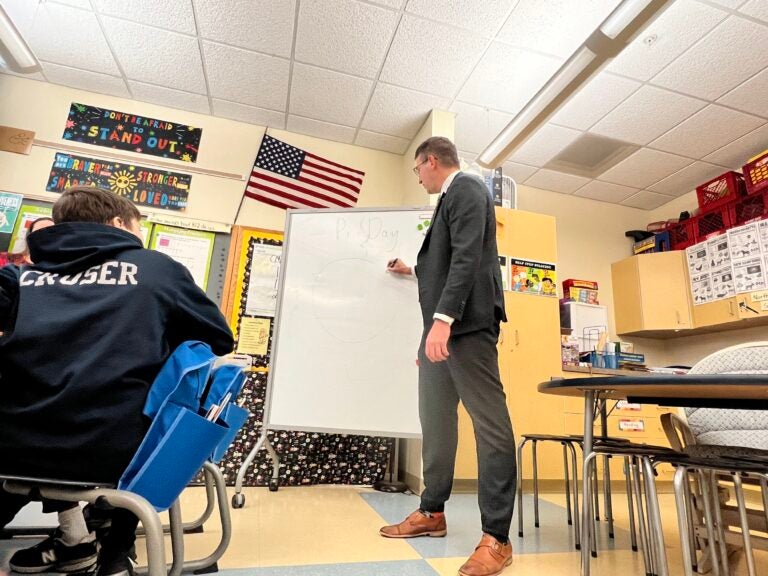
Delaware Gov. Matt Meyer is a former public school teacher. (New Castle County)
From Philly and the Pa. suburbs to South Jersey and Delaware, what would you like WHYY News to cover? Let us know!
In an exclusive interview with WHYY News, Delaware Gov. Matt Meyer said he’s ordering his secretary of education to push to implement a new public education funding system by the start of the 2025-2026 school year.
That would dramatically speed up an already delayed deadline for the Public Education Funding Commission, which is set to meet for the fifth time Feb. 10. Education Secretary Cindy Marten, who was confirmed by the state Senate on Jan. 29, will attend the commission’s meetings for the first time.
State Sen. Laura Sturgeon chairs the 31-member commission that includes lawmakers, executive branch officials, teachers, principals, school administrators and community advocates.
The commissioners first planned to deliver recommendations by this October, but almost immediately pushed that deadline back by amending the timeline to say that preliminary recommendations would be issued this year, but final recommendations would not be due until July 2026.
To implement a new funding formula for the 2025-2026 school year, lawmakers would need to fund it in the fiscal year 2026 state budget, which starts in July. Budget chiefs in the General Assembly have already been expressing reservations about legislation with hefty price tags due in part to uncertainty about the impact of unprecedented moves at the federal level, which has included attempts to freeze federal funding to states.
Meyer, who was a former math teacher before running for elected office, said he feels a sense of urgency about this issue.
“This is something that can drag on for years, in part because the kids I taught and many other parents, they’re not sitting in the room,” he said. “I think there’s general recognition among people that the resources are not being cut up in a way that’s fair to everyone and equitable to everyone.”
Delaware has a resource-based school funding system that was created in 1940. That means there’s a yearly count of students where the number of children in each building are converted into units. Meyer has voiced support for moving to a weighted student funding formula, where the money follows the student based on need.
Delaware’s education leaders and advocates have historically been divided between keeping the current system or moving to one where the money follows the child. Critics of the system say it fails to provide enough resources for low-income students, students with disabilities and English Language Learners. Supporters say the unit formula is easy to understand and predictable.
What’s clear is the state’s current education system is failing its students. Delaware is ranked 45th in the nation for educational outcomes, according to research from the University of Delaware. Three-fourths of fourth graders are unable to read proficiently and 82% of eighth graders are below proficiency in math. Earlier this month, Gov. Meyer declared a “literacy emergency” after national test scores revealed eighth grade reading scores in the First State hit a 27-year low in 2024.
Kendall Massett, executive director of the Delaware Charter Schools Network, supports Marten pushing the state to adopt a weighted student funding formula.
“Our funding system is one of the most antiquated funding systems in the country,” Massett said. “Every child has a different need, and every school has different needs. It is imperative that our schools have the ability to determine how funds are spent and not be told by somebody else to do that.
Marten has experience both with high-needs populations and with implementing a weighted student funding formula. Before serving in the U.S. Department of Education as deputy education secretary under President Joe Biden, she served as the superintendent of the San Diego Unified School District from 2013 to 2021.
She said Meyer has been clear about the direction he wants to take.
“Delaware has been unpacking what to do about an equitable funding formula, and as a governor, Meyer has been clear that he’s ready to do something about this,” she said. “I am bringing years of expertise at implementing not just what should happen and why it should happen, but how to make it happen.”
California implemented the Local Control Funding Formula (LCFF) in 2013, which allocates state funding by the proportion of unduplicated “high-need” students in the district: those from low-income families, English learners and those in foster care. It’s made up of a per-student base grant dependent on grade level, a supplemental grant for each high-needs student and a concentrated grant per high-need student in districts with more than 55% high-need students.
According to a 2023 report on the LCFF from the Learning Policy Institute, a nonpartisan education policy think tank that is helping guide the Public Education Commission through the decision-making process, the funding formula increases “significantly improved academic achievement for every grade and subject assessed, reduced grade repetition, enabled lower suspension rates, and increased the likelihood of students graduating from high school and being college-ready.”
A 2019 case study of how the San Diego district implemented California’s new weighted funding formula provided by a spokesperson from the governor’s office showed the district improved outcomes and equity for historically underserved students.
It’s unclear if the General Assembly will put in the amount of money some say is needed to boost the educational outcomes of disadvantaged youth. California added an additional $18 billion dollars that was phased in over six years.
A report released last year by the American Institutes for Research as a result of the lawsuit showed Delaware was underfunding high-needs students by $600 million to $1 billion.
Delaware is required to invest more money in public education due to a legal settlement with the American Civil Liberties Union of Delaware and others. Civil rights groups sued the state in 2018, alleging it was persistently underfunding disadvantaged public school students. The parties settled in 2020.
As part of the deal, the state had to provide $25 million in Opportunity Funding, which is equity dollars for low-income students, and was required to eventually reach $60 million in fiscal year 2025. The Delaware Department of Education said Opportunity Funding is at $63 million.
State Sen. Sturgeon said she doesn’t want people to get entrenched into taking sides on one formula over another.
“I think that if we continue to talk about student versus unit based as a binary choice rather than talk about what elements of the current system we have are working and we want to keep or keep some version of and what elements of alternative funding systems we want to introduce, then we’re going to always run into these impasses between different groups,” she said.
Sturgeon and Taylor Hawk, a commissioner and director of legislative and political strategy for the Delaware State Education Association, said they welcome Marten’s perspective, but they also hope Marten listens to people on the ground.
“I think that there is definitely an appetite for change,” Hawk said. “But we believe that making sure that change is successful and in the best interest of students will require the next administration to work collaboratively with educators, with district leaders, with parents and with community organizations to make sure that that we build the buy-in that’s needed to make any kind of transformational change work.”
Marten said she is sensitive to the fact that she is coming into the state as an outsider. But she said she also understands time is of the essence.
“Frankly, students are waiting,” she said.

Get daily updates from WHYY News!
WHYY is your source for fact-based, in-depth journalism and information. As a nonprofit organization, we rely on financial support from readers like you. Please give today.

